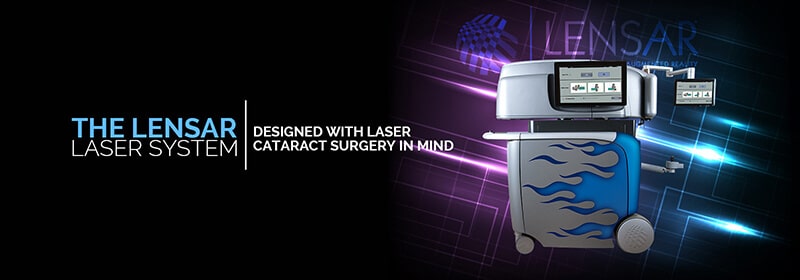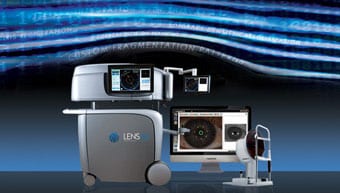
Stephenson Eye Associates is proud to be the first practice in Venice to offer patients such a high level of service and a truly bladeless surgical experience. Within the last few years, femtosecond laser technology has created a new ultra-modern technique for refractive cataract surgery. The LENSAR Laser Cataract System is one such instrument that uses high resolution 3-D imaging with advanced laser applications. This gives surgeons the ability to make more precise incisions in the cornea and lens allowing for a procedure that is customized to an individual eye’s own unique anatomy. The manual techniques used by the most excellent and experienced eye surgeons cannot match the extraordinary accuracy of the femtosecond laser incisions.

Dr. Stephenson has incorporated the unique properties of the LENSAR Laser Cataract System for refractive cataract surgery patients. Using the laser, she can tailor the procedure for each individual patient with the goal of reducing dependency on glasses or contact lenses. With an improved level of precision, premium intraocular lenses are placed with the most advanced technology available.

Although it’s a common belief that lasers have been used in cataract surgery for years, this is not true. With the introduction of the LENSAR™ Laser Cataract System, laser refractive cataract surgery has become a reality, and Dr. Stephenson can now remove your cataract in a more advanced way. Laser refractive cataract surgery is made even more precise by Augmented Reality™, a unique imaging system that provides Dr. Stephenson with a sophisticated, 3-D view of your eye.
With this advanced technology, She can offer you a better, more precise refractive cataract removal procedure that is customized to your eye’s own unique size and shape.
Dr. Stephenson offers the LENSAR™ Laser Cataract System as part of your refractive cataract procedure because it is safe, effective, and uses the same proven laser technology that’s been used in LASIK procedures for over a decade. Other benefits include:
Refractive cataract surgery is designed to improve your vision and reduce your dependency on glasses or contact lenses. During your procedure, Dr. Stephenson will use the most advanced technology available, including premium intraocular lenses and the LENSAR Laser System™ with Augmented Reality™, an advanced imaging system.
LENSAR’s superior Augmented Reality imaging system represents a more intelligent approach to cataract surgery. With Augmented Reality, Dr. Stephenson can see everything inside your eye in greater detail. This allows her to precisely soften the cataract in preparation for removal, and to ensure the appropriate condition for the most accurate placement of your intraocular lens.
It is LENSAR’s precision, imaging, and laser incisions that allow Dr. Stephenson to ensure that the cataract is safely removed and that the new intraocular lens is perfectly placed, resulting in outstanding refractive visual outcomes.